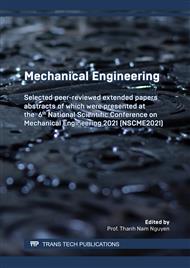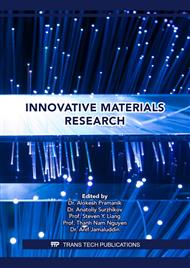p.21
p.27
p.39
p.47
p.53
p.65
p.71
p.79
p.89
Numerical Simulation of Flow Behaviour of PLA and PLA-Copper during Fused Deposition Modeling Process
Abstract:
Fused deposition modeling (FDM) has been developed to adapt more application with a wide variety of material used, especially metal filled PLA filament. However, choosing wrong PLA-based filaments’ process parameters is a popular situation that causes great product’s dimensional error. This research is focused on studying the difference in the input velocity parameters between PLA and PLA-copper filament. This paper presents a numerical nozzle model and use finite element analysis method to investigate the melted filament fluid behavior. Flow parameters such as pressure, melting temperature range and velocity were discussed in detail. Experiments were then carried to determine optimal printing velocity range of the two filaments. Results show that the filament input velocity has great influence on flow parameters as this velocity changes, the flow parameters change as well. Finally, based on the evaluation of dimensional accuracy of printed samples, the optimal input velocity for each type of filament has been found, which are 2 – 3.5 mm/s for PLA and under 5 mm/s for PLA-copper.
Info:
Periodical:
Pages:
53-63
Citation:
Online since:
June 2022
Authors:
Keywords:
Price:
Сopyright:
© 2022 Trans Tech Publications Ltd. All Rights Reserved
Share:
Citation:



